Some of the greatest inventions in history were developed to make life easier and more efficient for contemporary people. While many of them accomplished this goal, some make us scratch our heads in wonder and confusion.
Take, for example, the collection of inventions shown here. While some can be called “revolutionary” or “ahead of their time,” others are simply absurd and bizarre. One thing is certain … they can all be called “innovative”.
Flying Cars
Although we now have drones that deliver our pizzas and Amazon packages, the public is still waiting for the day when we can all zip around in flying cars like George Jetson. The concept of flying cars has been a longstanding vision of the future … and the first flying cars were invented in the 1950s.

Perhaps the most famous flying car prototype was the Aerocar. Designed by Molt Taylor, the Aerocar was a road-worthy aircraft with foldable wings and a detachable tail section. In theory at least, it was supposed to easily convert from a small airplane to a car. The Aerocar fell victim to practical challenges, safety concerns, and FAA regulations.
The Antikythera Mechanism
In 1901, sponge divers found a strange device off the coast of the Greek island of Antikythera in the Aegean Sea. The device is a wooden box with a complex system of gears and a hand crank. Analysis on the device showed that it dates back to the 1st or 2nd centuries BCE.
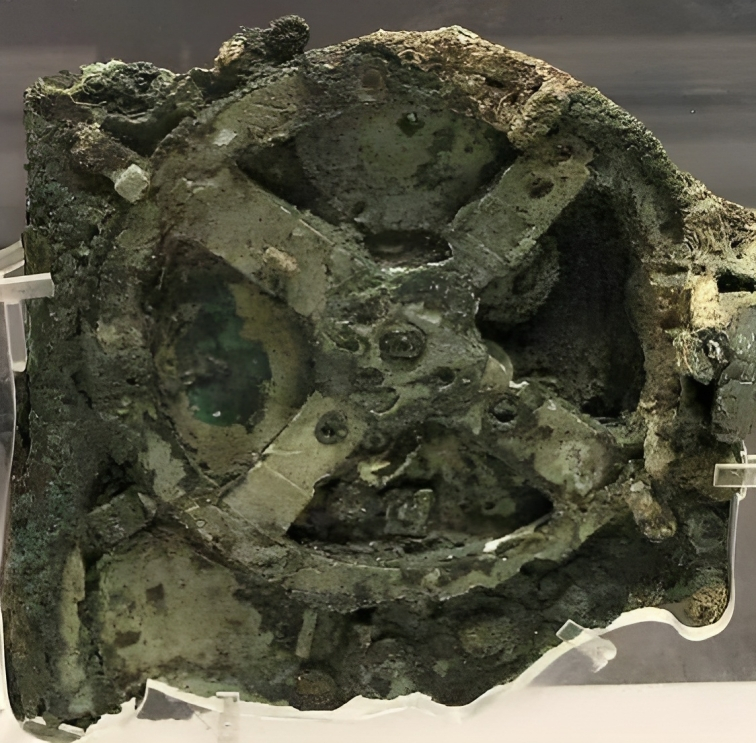
As out-of-place as it seems, the Antikythera Mechanism is an ancient analogue computer that predates Apple Computers by centuries. Most experts believe that the Antikythera Mechanism was used to predict astronomical positions, like eclipses.
Smell-O-Vision
To enhance TV watching and create a more immersive experience for viewers, television manufacturers of the early 1960s dabbled in Smell-O-Vision. As the name implies, Smell-O-Vision sought to synchronize specific scents to the content being displayed on the screen.

While Smell-O-Vision generated interest and curiosity, it faced too many challenges to make it marketable. TV sets had to come fully stocked with a wide range of scents. Customers complained that smells lingered or caused allergic reactions. And some were, in the words of Spongebob Squarepants, “smelly smells that smells smelly.”
Amphicar
President Lyndon B. Johnson, a practical joker, owned an Amphicar … an automobile that could float on water and be piloted like a boat. He loved to take guests for a ride around his Texas ranch then drive headlong into a lake. While his guests screamed and white-knuckled the dashboard, Johnson would shout about faulty brakes.

The joke was on the unwitting victims. Johnson was one of the few proponents of the Amphicar, which was manufactured from 1961 to 1968 in West Germany. Demand for amphibious cars was limited. The Amphicar was discontinued, and the concept was relocated to Hollywood spy flicks and superhero movies.
Anti-Comet Pills and Umbrellas
Astronomers figured out a long time ago that Halley’s Comet swings past Earth roughly every 75 years. Folks were eagerly awaiting the comet’s return in 1910 until astronomer Camille Flammarion announced that the comet would come so close to Earth that our planet would pass through the comet’s tail, exposing mankind to potentially toxic space chemicals.

While most people panicked when they heard about this, get-rich-quick inventors saw it as an opportunity. They offered anti-comet pills, which they claimed contained antidotes to counteract the space chemicals. In addition, anti-comet umbrellas hit the market. These were basically regular umbrellas covered in tin foil. The gullible public bought both of these items, then breathed a sigh of relief when they “worked”.
The Runcible Spoon
No doubt, the spork – half fork, half spoon – has revolutionized the cafeteria and take-out experience for the last couple generations. The 16th century invention, the Runcible Spoon, outshined the spork even though it failed to become the newest, trendiest dining utensil.

Textual references to the Runcible Spoon tell us that this utensil combined the fork, spoon, and knife into one handy tool for cutting, jabbing, and slurping one’s dinner. Some descriptions of the Runcible Spoon remind us of a grapefruit spoon because it had a sharp, serrated edge along one or both sides of the spoon. Why didn’t the Runcible Spoon take off? No one can say for sure, but it could be that the utensil caused injuries.
The Baghdad Batteries
A number of strange ceramic jars, dating back to around 250 BCE to 224 CE, near Baghdad, Iraq. The jars contained copper cylinders and an iron rod. Archaeologists were puzzled. What could these jars be? When filled with an acidic liquid, like wine or vinegar, the jars produced electricity.
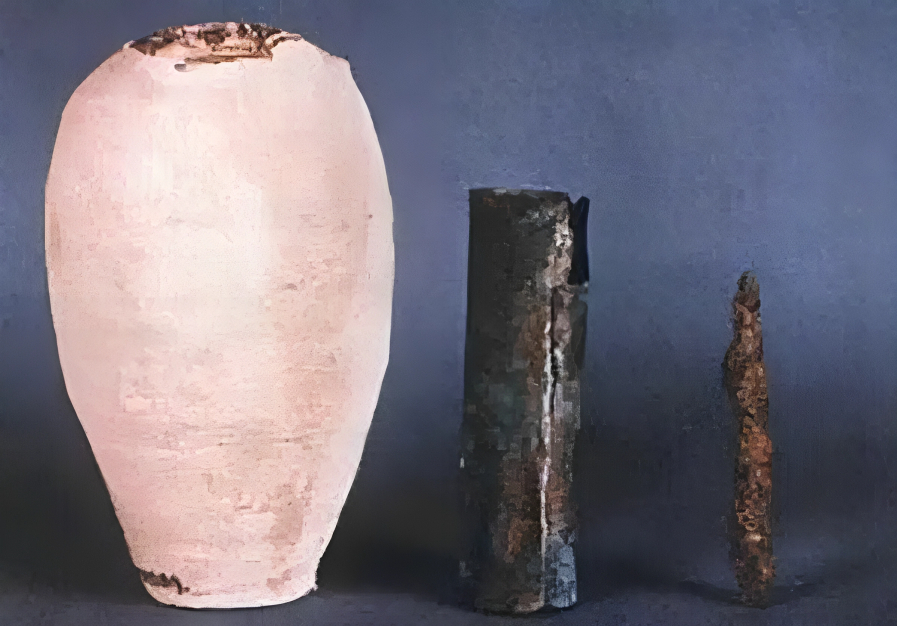
In the 1930s, a German archaeologist, Wilhelm Konig, dubbed these Baghdad Batteries. Did people in antiquity need batteries to charge their cell phones or power their boomboxes? Of course not! The most common theory is that Baghdad Batteries were used to electroplate objects.
The Dynasphere
Why drive on four wheels where you can drive on one? In the early 1930s, Scottish engineer J.A. Purves created a zany monowheel vehicle called the Dynasphere. Purves viewed the monowheel as an alternative to traditional automobiles like the Model-T Ford.

Imagine sitting inside a giant tire that rotates around you. That’s how the Dynasphere worked. Only the Dynasphere didn’t really work like it was supposed to. The vehicle has issues with stability and maneuverability. It looks like a clown car. No wonder it failed.
Water Clocks
Remember that Jim Croce song about saving “time in a bottle?” The Ancient Greeks had something like this centuries before 1973. One of the earliest types of timekeeping device, the Ancient Greek clepsydra used the flow of water to measure the passage of time.

Clepsydras used either intake or outtake methods … water filling a container or water emptying from a container … to measure time. Unfortunately, clepsydras were not portable. In fact, disturbing the clocks in any way messed up the timekeeping.
Greek Fire
The Greeks created an incendiary weapon that was lit. Literally lit. Between the 7th and 12th century, the military of the Byzantine Empire had a secret weapon that made them virtually unbeatable in naval battles. That weapon was called Greek Fire.

What was Greek Fire? We don’t know. The Greeks kept the formula a closely guarded secret … so secret that it has been lost to time. Greek Fire was described as “burning on water.” It was probably made of petroleum, quicklime, or other flammable chemicals that would float on the surface of the water as it burned.
Wireless Electricity
You know how we get radio, cell service, wi-fi, and television from signals that are broadcast through the air? Back in the early 1900s, genius inventor Nikola Tesla envisioned a system that would transmit electricity wirelessly through the air … free for anyone to use.

He did more than just envision it. He conducted experiments and built a prototype to demonstrate the feasibility of his plan. Tesla’s Wardenclyffe Tower, located in Shoreham, New York, was supposed to provide free, wireless electricity, however Tesla ran out of money. He was unable to secure funds to bring his idea to fruition.
The Electric Pen
In 1876, brilliant inventor Thomas Edison added one more patent to his collection, which would eventually number 1093 in total, when he patented his electric pen. This device consisted of a small electric motor powering a pen with a reciprocating tip. As the user wrote on the paper, the electric pen made tiny perforations in the paper. They could then make numerous copies of the page by rolling ink over it like a stencil.

The electric pen never achieved widespread commercial success. It wasn’t a total failure, however. Edison’s electric pen idea was later adapted to create the tattoo gun we see at tattoo parlors today.
The Aeolipile
In the 1st century AD, a Greek engineer and mathematician, Heron of Alexandria, invented the first steam turbine. Called the Aeolipile, or Heron’s ball, this device consisted of a simple hollow sphere mounted on a central axis. The sphere has two curved nozzles pointing in opposite directions, each positioned on opposite sides of the sphere’s equator.

When the sphere is filled with water and heated, the water vapor escapes through the nozzles, resulting in a rotational motion of the sphere. Heron’s aeolipile is considered an early demonstration of the principles of steam power, although its practical applications were limited in ancient times.
The Microsoft SPOT Watch
Bill Gates has always been a man ahead of his time. In 2004, Gates and Microsoft launched the world’s first smartwatch, the Microsoft SPOT (Smart Personal Objects Technology). The SPOT watch was an ambitious venture that aimed to bring real-time information, including news, weather reports, and stock updates, to users through FM radio signals.

The wearable electronics received much hype, but ultimately it was a flop. It was costly, required a monthly subscription, and was glitchy. It was discontinued in 2008 and was a setback in the company’s goal of creating wearable technology. After the Apple Watch debuted in 2015, the public was ready for smartwatches.
Contact Lens
Contact lenses might seem like a modern invention, but these types of corrective vision devices can trace their roots back hundreds of years. Leonardo da Vinci, the famed artist and inventor, was the first one to float the idea of contact lenses. His 1508 Codex of the Eye described ways to alter the cornea to improve eyesight.

In 1632, Rene Descartes revisited the idea of contact lenses. His idea involved tubes of water that would be stuck into the eyes and held in place with an external support system. Of course, the wearer couldn’t blink, but at least they could see.
The Radio Hat
Folks in 1949 probably thought they were quite space-agey when they wore the “Man-From-Mars Radio Hats,” a basic bucket hat with a built-in radio. Thanks to advertising and promotional campaigns on popular radio shows around the country, radio hats were all the rage for a hot minute.
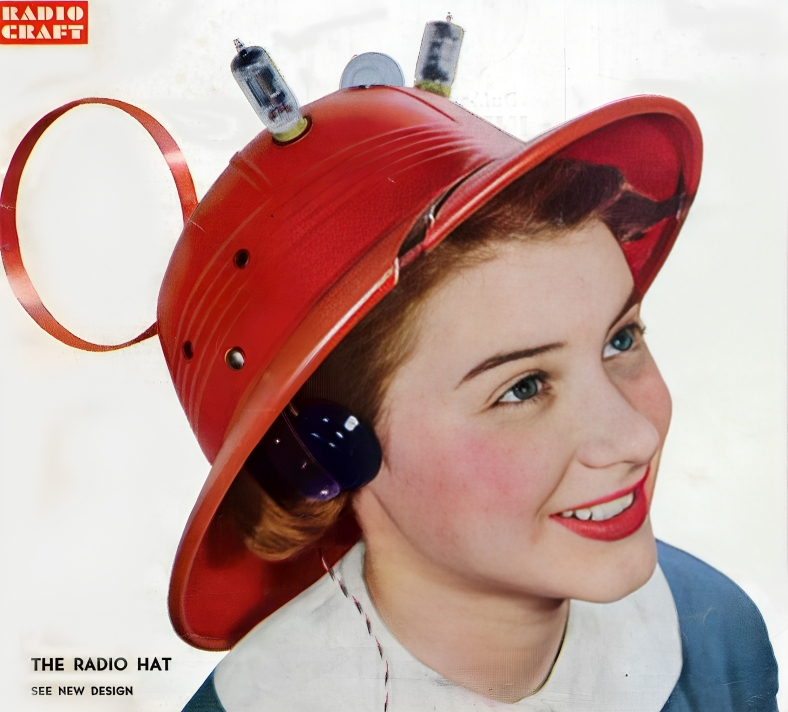
Manufactured by the American Merri-Lei Corporation, a company that sold party supplies, radio hats predated the invention of transistor radios. Wearers walked around with vacuum tubes and antennae in their hats. And there were no headphones so wearers could more readily share their music with everyone around them, whether they liked it or not.
An Ancient Earthquake Detector
Today, seismologists use sensitive equipment to record tectonic movements deep within the earth and analyze this data to predict earthquakes. Although seismometers are becoming more advanced each year, accurately predicting earthquakes is still an inexact science. More than 2,000 years ago, however, an ancient Chinese inventor, Zhang Heng, made the world’s first seismoscope which proved to be incredibly accurate.
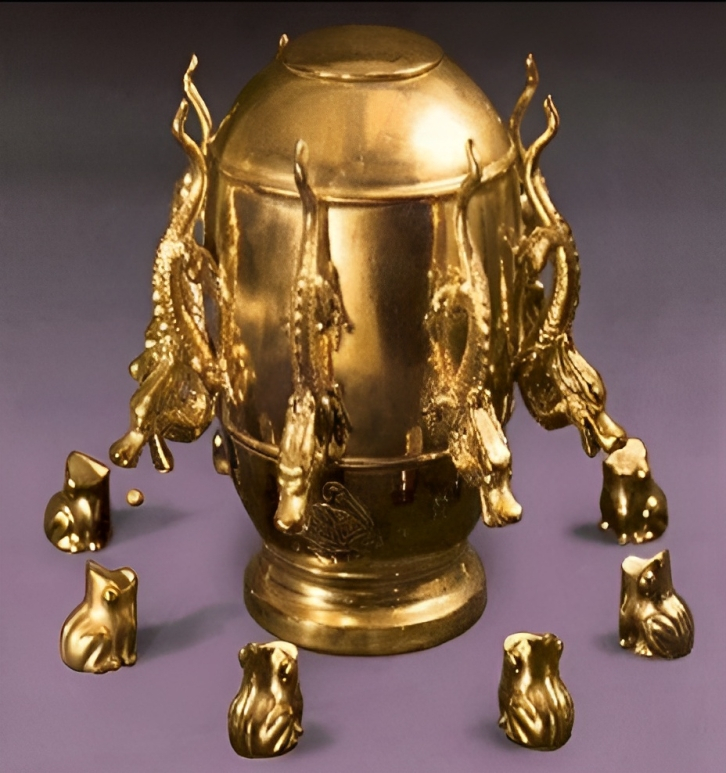
Source: Pinterest
Called the Houfeng Didong Yi, Zhang Heng’s seismoscope was made in the shape of ajar with eight tubes extended from a circle of dragon heads on the exterior of the jar. When the device detected an earthquake, a small ball fell out of one of the dragon’s mouths and into the mouth of a toad figure affixed to the base of the jar. The toad indicated the direction the seismic wave was traveling.
Telharmonium
Electronic music wasn’t a disco-era invention. The Telharmoniun, sometimes called the Dynamophone, was invented in the late 1800s by Thaddeus Cahill and is widely considered to be the first electronic musical instrument.

Unlike the sleek electronic keyboards we are used to, the Telharmonium was a massive apparatus. It consisted of a series of spinning rotors and tone wheels that generated electrical signals to make sounds. The electrical signals were transmitted over telephone lines so listeners could listen to music via their phone receivers.
Vending Machines
Today’s vending machines are typically stocked with unhealthy snack options, like candy bars, sodas, and chips. The first vending machines, however, dispensed a product that was good for your soul. These vending machines from the 1st century dispensed holy water.
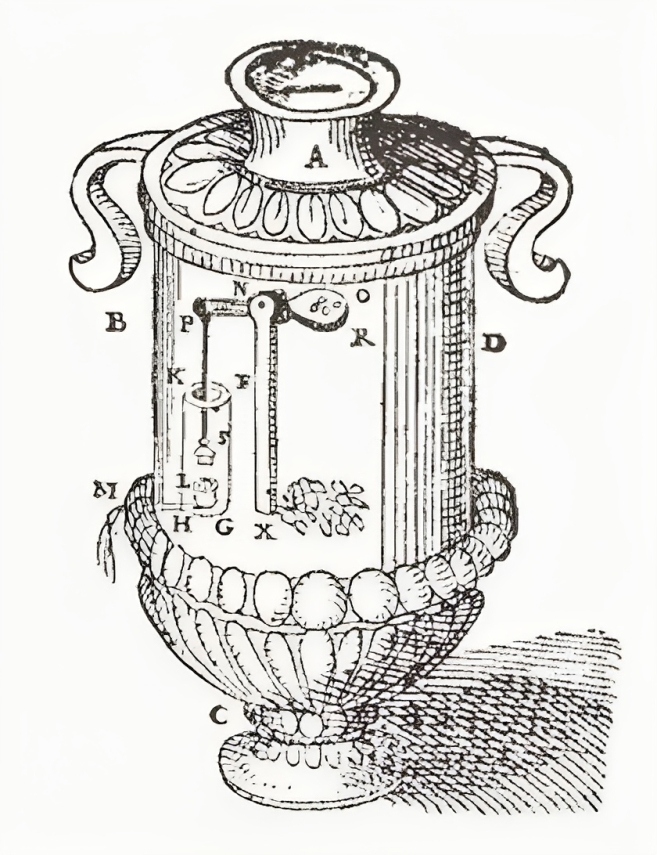
Hero of Alexandria, a Greek engineer, mathematician, and inventor built a box with a series of levers. When the user inserted a coin, it triggered the levers to open a valve and pour out a small amount of holy water.






